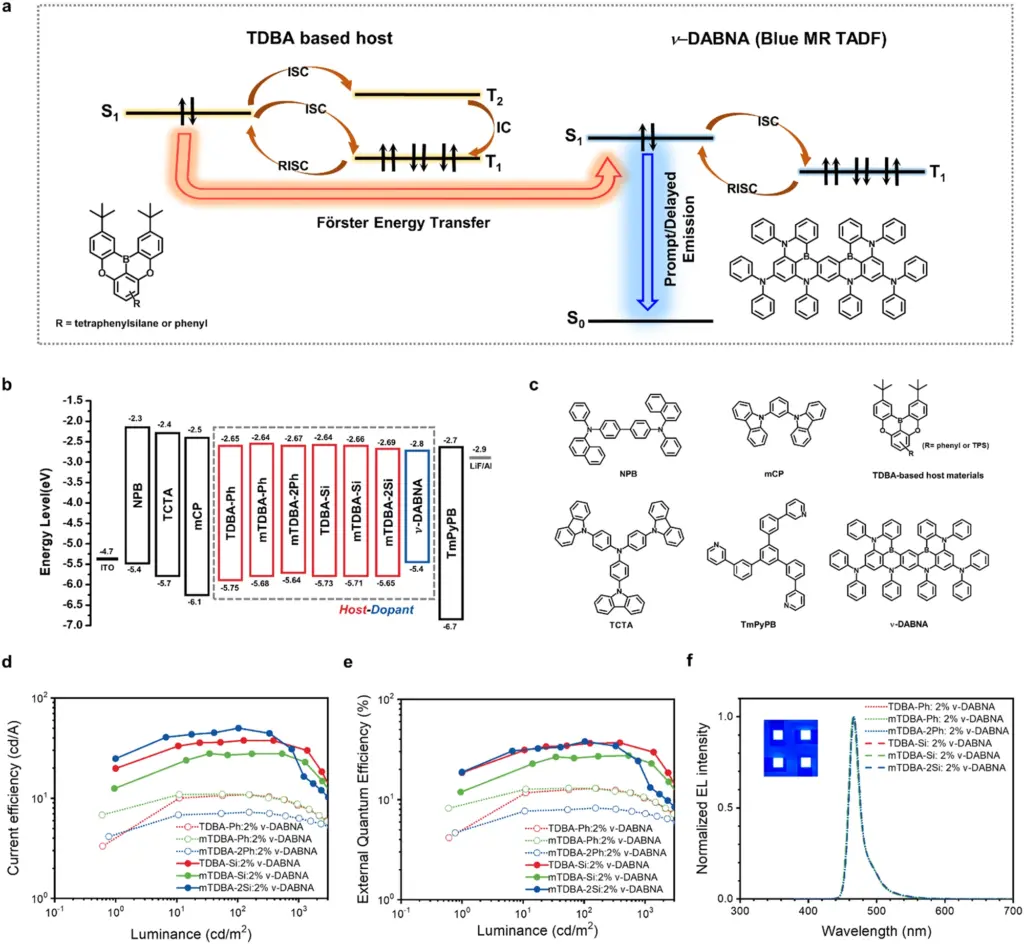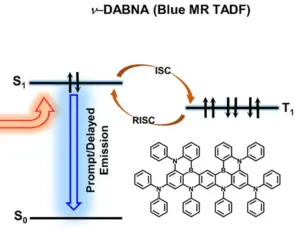Blue light, due to its shorter wavelength, has historically been less energy-efficient compared to red and green light in OLED displays, posing a challenge for device performance. Researchers from Korea’s Kyung Hee University have developed three new blue light-emitting materials that aim to address the efficiency problem. These materials include a specific chemical structure, named 5,9-dioxa-13b-boranaphtho[3,2,1-de]anthracene (or DOBNA for short), combined with tetraphenylsilyl groups, which are basically big chunks of molecules containing silicon.

When these newly developed materials are combined, technically doped, with a conventional blue light emitter named ν-DABNA, they display very desirable properties for OLEDs. This includes a high percentage of the energy they receive is converted into visible light, quantified as a photoluminescence quantum yield greater than 0.82. They have a high horizontal orientation greater than 88%. This means the molecules align in a way that makes the OLED display more efficient and brighter. And, they have a photoluminescence decay time of 0.96–1.93 microseconds which translates into a fast response time for producing light.
Of all the materials the researchers made, one named TDBA-Si stood out. Devices using this material displayed very high efficiency, especially at different brightness levels. For instance, at its maximum brightness, it reached an efficiency of 36.2%. The reason for this impressive performance is that the energy transfers very quickly from the new materials to the conventional blue light emitter (ν-DABNA). There are also other contributing factors: the new materials might be contributing their own energy to the process; the large tetraphenylsilyl groups help prevent the molecules from clumping together, which can hinder performance; the materials are very stable at high temperatures.
Using this standout material, TDBA-Si, the researchers achieved an OLED with over 30% efficiency and only a tiny decrease in performance (only 4.9%) at a high brightness of 1,000 cd/m2. This indicates that the display can remain efficient even at high brightness levels. Professor Jongwook Park, who lead the research team, believes that the principles used in this study can help design light-emitting materials using other atoms, opening up the possibility of for many other new materials to drive OLED development. For the research team, their efforts are part of a desire to create future value with long lifespan, higher efficiency materials that can help Korea’s competitiveness in the display market.
Reference
Park, D., Kang, S., Ryoo, C.H. et al. High-performance blue OLED using multiresonance thermally activated delayed fluorescence host materials containing silicon atoms. Nat Commun 14, 5589 (2023). https://doi.org/10.1038/s41467-023-41440-1

